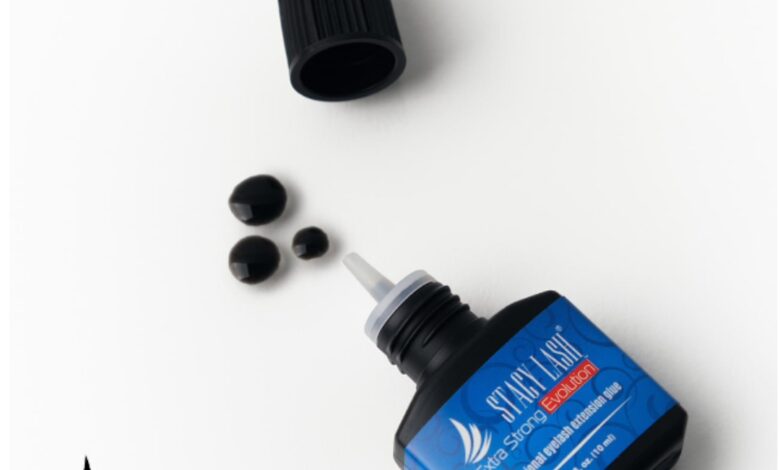How to Choose the Right Lash Glue for Extensions

Simple truth is, the choice of lash glue is as important as the lashes themselves. The adhesive you select plays a key role in client satisfaction, lash retention, and overall safety. Whether you specialize in classic, volume, or hybrid techniques, using the wrong eyelash extension adhesive can result in poor retention, allergic reactions, or even damage to the natural lashes. Understanding the characteristics of different adhesives is essential to deliver long-lasting, beautiful results while prioritizing client safety and comfort.
Different Types of Lash Glues and Their Benefits
There is no one-size-fits-all lash glue. Each formula is designed to meet specific needs based on client sensitivities, environmental conditions, and lash artist techniques. Here’s a breakdown of the main types:
1. Sensitive Glue
Sensitive glue is specifically formulated for clients prone to allergic reactions or irritation. These adhesives typically contain lower levels of cyanoacrylate and produce fewer fumes, reducing the risk of redness or swelling. However, it’s important to note that while sensitive adhesives are gentler, they often require longer drying times and may not offer the same retention as standard adhesives.
2. Fast-Drying Glue
Fast-drying glues are ideal for experienced lash artists who work quickly. These adhesives set in as little as 0.3–1 second, significantly speeding up application time. They are perfect for volume and mega volume techniques where speed is critical to prevent lash fans from closing. However, fast-drying adhesives are less forgiving and can be challenging for beginners.
3. Long-Lasting Glue
For clients who demand maximum retention, a long-lasting glue is essential. These adhesives are engineered to create strong bonds that resist environmental factors such as humidity, oil exposure, and friction. Long-lasting glues are favored for classic sets and are ideal for clients seeking results that last 6–8 weeks with proper aftercare.
4. Wide Humidity Range Glue
Such adhesives are specifically designed to perform well in a wide humidity range. Sometimes it can be too humid or too dry in the specific region, and adjusting salon environment can be a royal pain. Besides investing in expensive tools, it’s always risky and stressful, because you never know when your glue will throw a tantrum. However, wide humidity range glues bring a desired peace of mind.
Choosing the right eyelash extension adhesive requires balancing client needs, your lashing speed, and salon conditions such as temperature and humidity.
Common Mistakes When Applying Lash Glue (And How to Avoid Them)
Even the highest quality lash glue cannot perform optimally if mishandled. Avoid these common mistakes to ensure the best results:
1. Using too much glue: Excess adhesive can weigh down the natural lash, leading to premature shedding and clumping. Always aim for a small, neat bead of glue at the base of the extension.
2. Applying glue incorrectly: Extensions should be attached about 0.5–1 mm away from the lash line to prevent irritation. Never allow adhesive to touch the skin.
3. Not adjusting for humidity: Lash glue behavior changes with humidity levels. In high humidity, glue cures faster, while in low humidity, it dries slower. Use a hygrometer in your studio and adjust your technique or glue type accordingly.
4. Using expired glue: Lash glue typically has a shelf life of about 1–2 months once opened. Using old adhesive leads to weak bonds and poor retention. Always replace opened bottles regularly.
Attention to these details will help maximize the performance of your chosen adhesive and improve overall lash longevity.
The Ideal Drying Time for Optimal Bonding
Understanding drying time is crucial when selecting and working with lash glue. The “drying time” refers to how quickly the adhesive cures once the extension is attached to the natural lash.
For Beginners: A slower drying adhesive (2–6 seconds) is often better, allowing more time to adjust the placement.
For Intermediate and Advanced Artists: Faster drying adhesives (0.3–2 second) allow for rapid application, minimizing stickies and improving efficiency.
It’s important to match your adhesive’s drying time to both your skill level and the room’s humidity. If your adhesive dries too fast or too slow compared to your pace, it can compromise the quality of your set. Always shake your adhesive well before use (about 30–60 seconds) to ensure consistent performance.
Tips for Removing Lash Glue Safely
Whether it’s correcting a misplaced extension or removing a full set, knowing how to remove lash glue safely is just as important as knowing how to apply it. Here’s how:
1. Use a Professional Remover
Always use a gel or cream remover specifically formulated for eyelash extensions. These products break down the adhesive without damaging the natural lashes.
2. Apply Carefully
Apply the remover precisely on the bonded areas using a micro brush or lint-free applicator. Avoid getting the product into the eyes.
3. Allow Time for Dissolution
Let the remover sit for the required amount of time, depending on the glue’s strength. Do not force the extensions off before the adhesive is fully dissolved.
4. Gently Slide Extensions Off
Once the adhesive has broken down, gently slide the extensions off with a micro brush or tweezers. Never pull or tug at the natural lashes.
5. Rinse Thoroughly
After removal, rinse the lashes thoroughly with a lash cleanser to ensure no residue remains.
Proper lash glue removal maintains the integrity of your client’s natural lashes and builds trust in your professionalism.
Conclusion
Choosing the right lash glue is a critical decision that impacts your results, your client’s comfort, and your professional reputation. By understanding the different types of eyelash extension adhesives, avoiding common mistakes, mastering drying times, and practicing safe lash glue removal, you can consistently deliver beautiful, long-lasting results. Investing time in learning about adhesives—and adapting to each client’s unique needs—sets you apart as a knowledgeable, skilled lash artist in today’s competitive beauty market.



